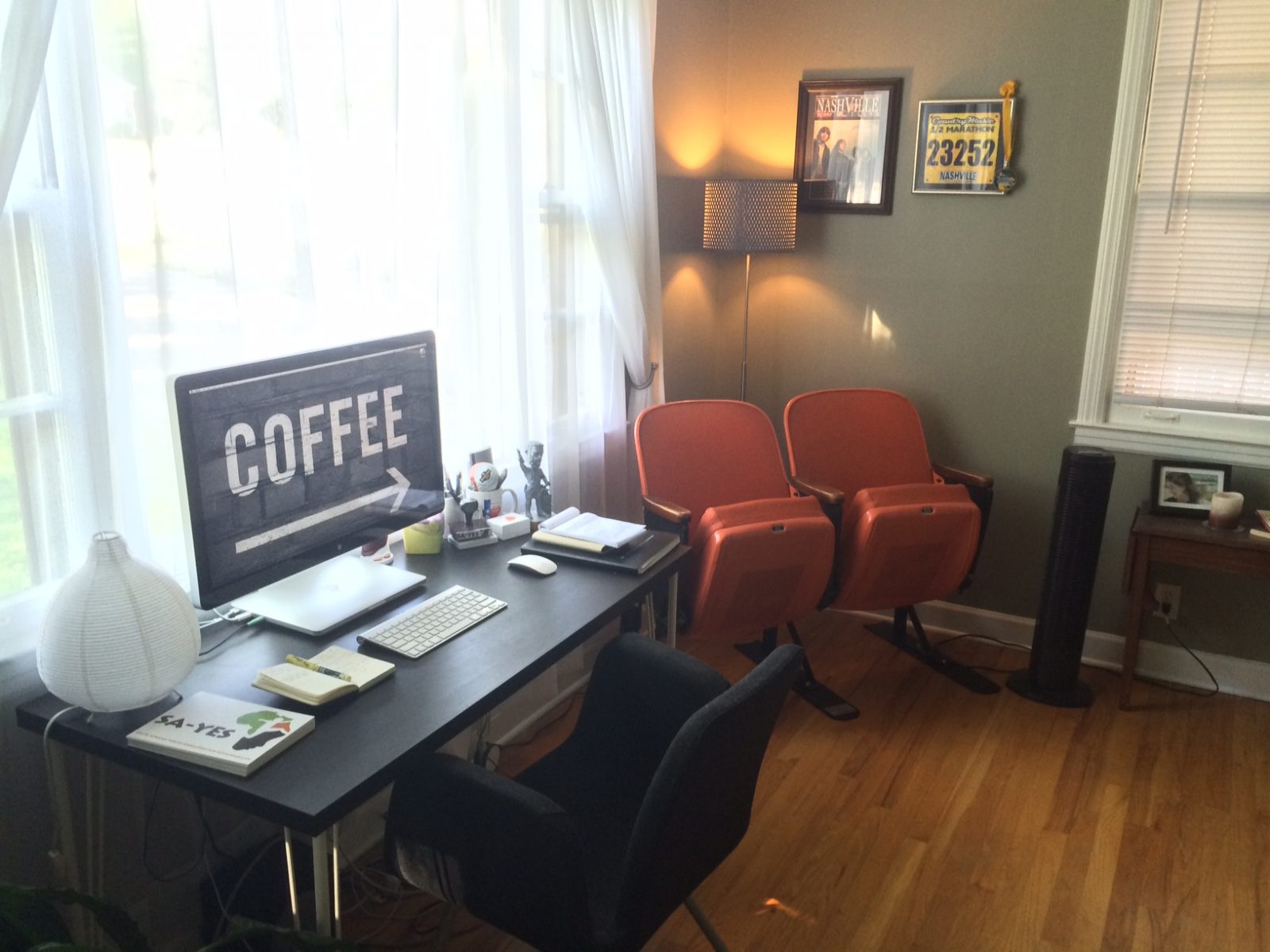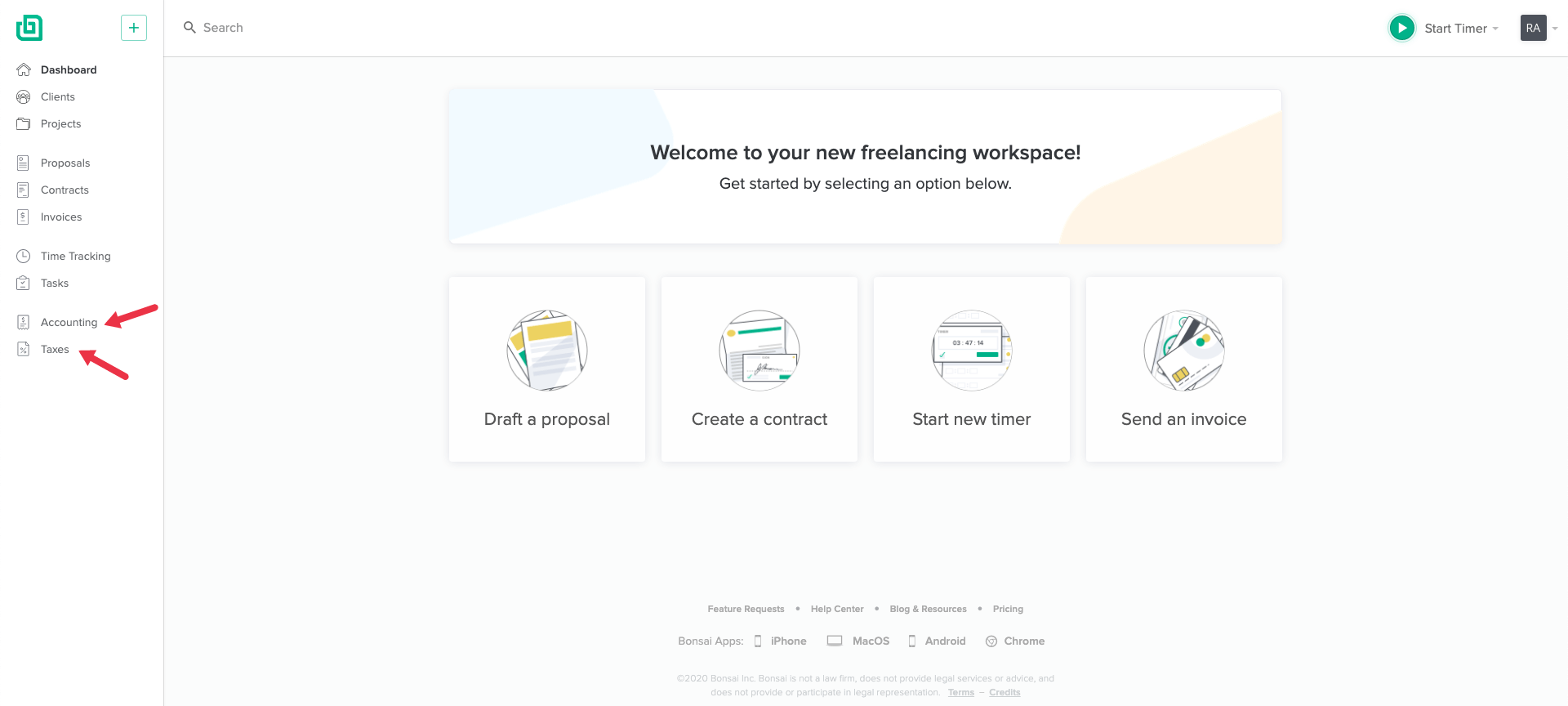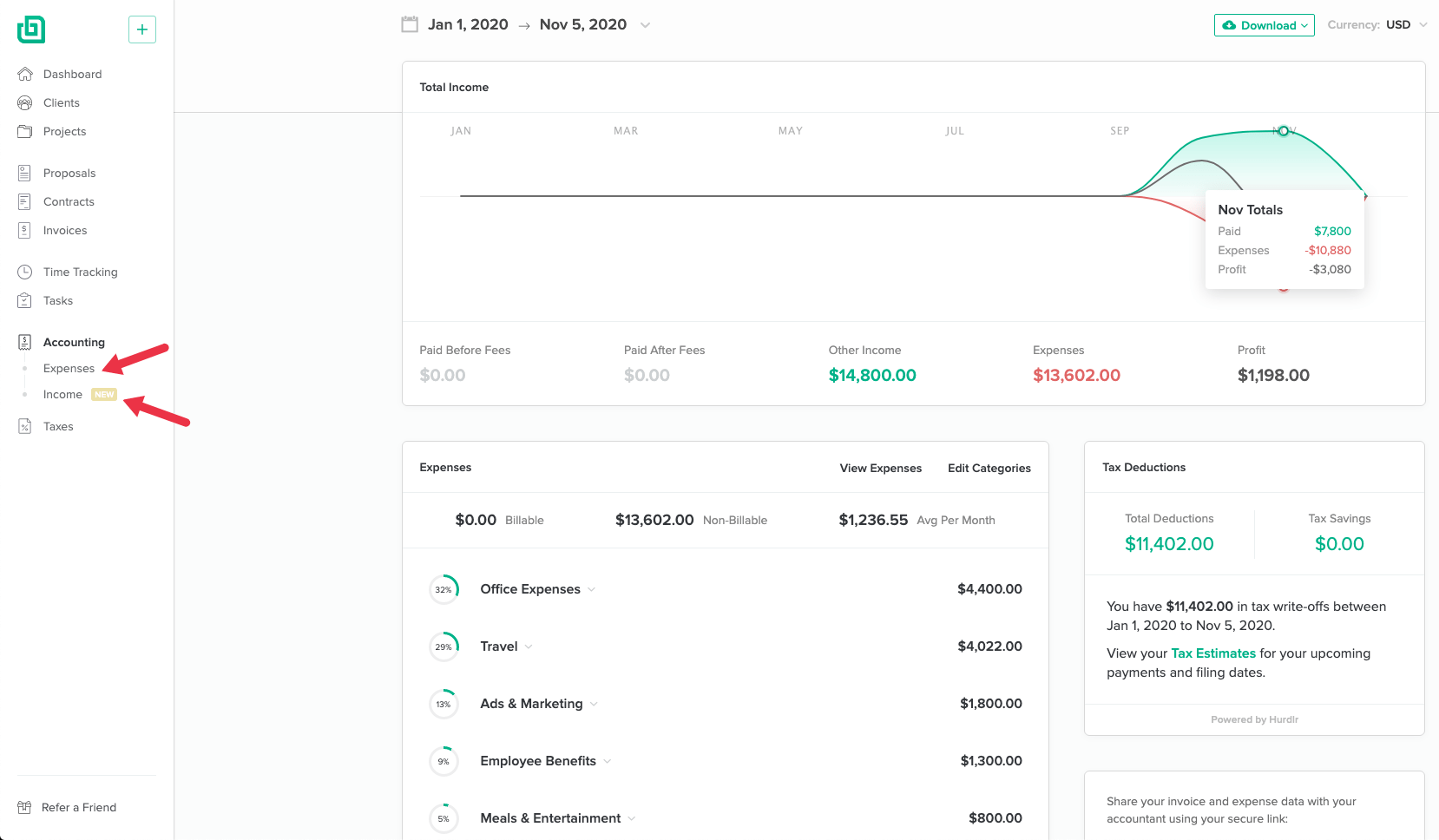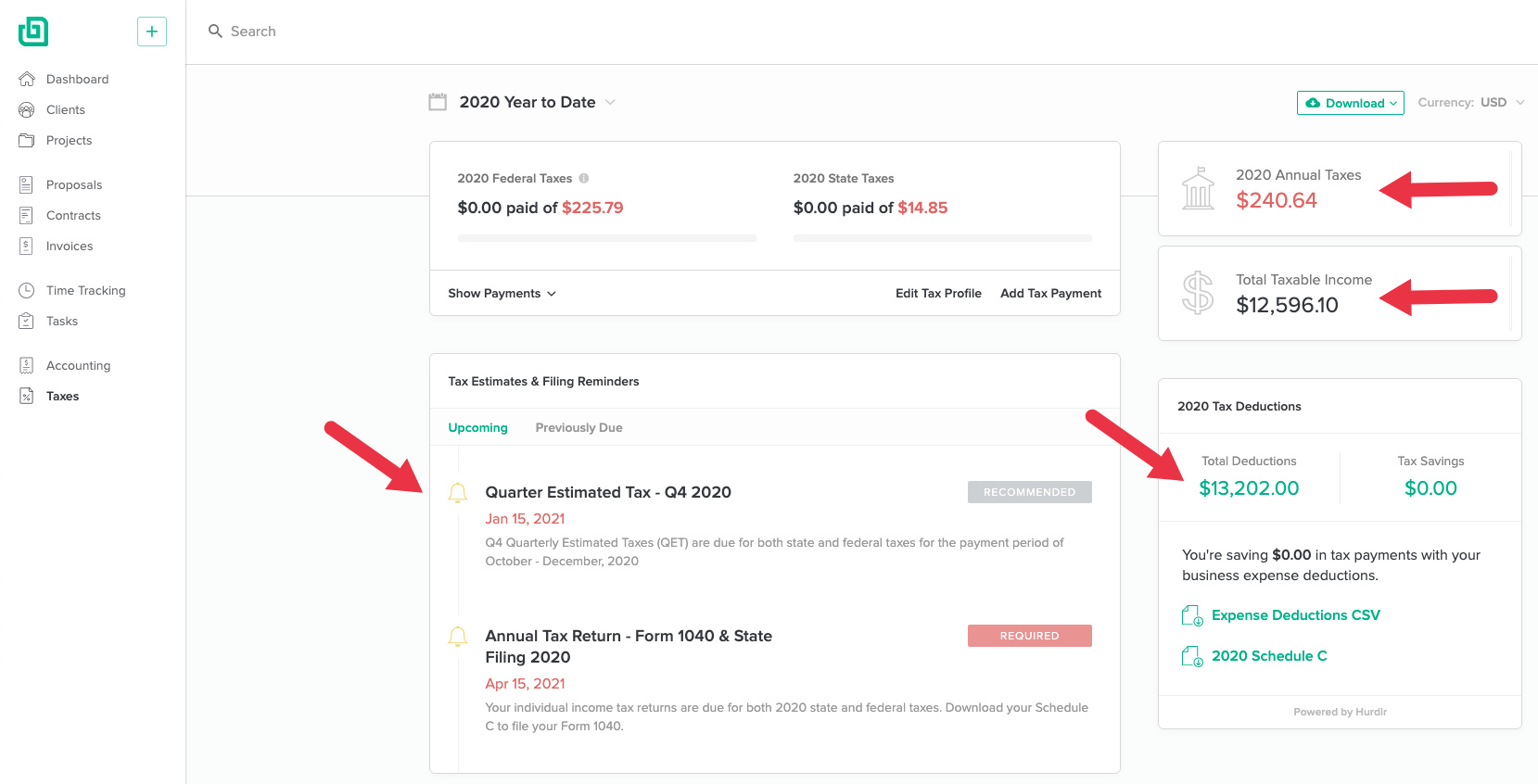Se você é um freelancer que usa sua casa como local principal de trabalho e se redige e envia todos os seus modelos de fatura a partir de casa, provavelmente já preencheu (ou irá preencher) o formulário 8829 para o imposto sobre trabalho independente. Este documento do IRS é intitulado “Despesas para uso comercial da sua residência” e é comum que os trabalhadores autônomos o preencham a cada ano fiscal. Embora você provavelmente não reconheça o formulário se usar serviços de software comuns, você ainda assim o está preenchendo; eles simplesmente automatizam o processo por meio de uma série de perguntas e respostas.
Descubra nossas instruções para usar o Formulário 8829 para o seu negócio em casa!
Você é elegível para o formulário 8829?
Antes de presumir que o formulário se aplica a você, há algumas coisas que o IRS deseja garantir antes de você reivindicar qualquer espaço em sua casa como um “escritório doméstico”. Os detalhes completos do formulário estão listados no site do IRS, mas aqui estão os pontos básicos.
Você deve responder “sim” a uma das seguintes perguntas para poder obter benefícios fiscais com o formulário:
- Você usa sua casa como local principal de negócios para qualquer um dos seus negócios?
- Você usa sua casa como local de trabalho, onde pacientes, clientes ou consumidores se reúnem com você regularmente?
- Você utiliza uma estrutura separada (galpão, garagem ou prédio) relacionada ao seu negócio?
No entanto, se você possui uma creche ou utiliza seu espaço comercial para armazenar estoque de produtos, serão aplicadas exceções.

Também é importante qualificar sua casa para um negócio de acordo com o quanto você usa o espaço. Lembre-se de que você pode usar o imposto Bonsai para ajudar a identificar deduções fiscais.
O IRS quer garantir que você o utilize “exclusiva e regularmente para atividades administrativas ou de gestão” relacionadas com o seu negócio e que não tenha nenhum outro local onde realize uma parte substancial do seu trabalho.
Um exemplo disso seria se você passasse 40 horas por semana ou mais trabalhando em projetos na Starbucks porque sua casa é muito pequena; o IRS consideraria a Starbucks como seu local de trabalho principal, desqualificando sua casa. (Usar um quarto de hotel ou um espaço de escritório temporário durante uma viagem de negócios não o desqualificará, pois não é nesse local que você realiza a maior parte do seu trabalho.)
Como calcular sua dedução por escritório em casa
Como o principal objetivo do formulário 8829 é obter uma dedução comercial que você pode deduzir de seus ganhos totais – e diminuir sua renda tributável –, é importante preencher o formulário da melhor maneira possível para obter o máximo benefício possível. Existem muitos campos no formulário que exigem que você forneça informações honestas sobre sua configuração de trabalho, incluindo:
- A metragem quadrada total da sua casa
- A metragem quadrada do espaço que você usa exclusivamente como escritório em casa
- Despesas relacionadas à propriedade e manutenção da sua casa, incluindo: reparos domésticos, juros hipotecários dedutíveis, impostos sobre a propriedade, seguros, serviços públicos e taxas de propriedade/manutenção da casa
(Observe que “despesas do escritório” e “despesas domésticas” não são a mesma coisa. Você poderá declarar o custo de itens como material de escritório e móveis em outro formulário na sua declaração, mas eles não devem ser incluídos no formulário 8829. As despesas com escritório em casa estão restritas apenas aos custos associados à estrutura e manutenção da sua casa.
O formulário também tem um espaço para um conjunto mais complexo de números, incluindo a depreciação da sua casa e o transporte de quaisquer despesas não permitidas de anos anteriores. Seu consultor fiscal deve poder orientá-lo sobre essas questões, mas a maioria dos fornecedores de software para negócios domésticos também tem perguntas apropriadas que abordam esses assuntos. Não se esqueça de seguir as instruções do formulário 8829 do IRS ao preenchê-lo.
Você sabia que pode usar o Bonsai para contabilidade? Ou que a Bonsai pode ajudá-lo a se preparar para o imposto sobre o trabalho autônomo, fornecendo estimativas fiscais, lembretes de datas de preenchimento e identificando suas deduções fiscais?
Vamos ver como isso funciona. Primeiro, acesse o painel principal do Bonsai e observe atentamente o lado esquerdo — trabalharemos com as seções de contabilidade e impostos. Primeiro clique em “Contabilidade”.

Na seção de contabilidade, você verá um detalhamento de suas receitas e despesas. Ambos podem ser importados automaticamente da sua conta bancária ou adicionados manualmente. Os trabalhos pelos quais você foi remunerado através do Bonsai também serão registrados aqui.
Certifique-se de que esta seção esteja preenchida corretamente e clique em “Impostos” em seguida.

É aqui que a mágica acontece: o Bonsai fará todos os cálculos para você e forneceremos uma visão geral das suas estimativas fiscais, uma lista de deduções fiscais que você pode usar para a próxima temporada de impostos e lembretes para todas as próximas datas de declaração.

Simples, certo? Se você está pronto para conferir o Bonsai e explorar todos os recursos, inscreva-se para o teste gratuito!
Utilizando a dedução simplificada para escritório em casa
Se alguma das informações acima fez sua cabeça girar, você não está sozinho. Na verdade, o IRS tomou uma medida surpreendente em 2013 com a introdução de uma forma mais simples de fazer a dedução do escritório em casa. A medida criou uma maneira muito simples de obter um número rápido para inserir em seus formulários fiscais e economiza cerca de 1,6 milhão de horas de trabalho administrativo para os contribuintes a cada ano. Como tal, funciona para um bom número de freelancers que trabalham em casa com um espaço de escritório modesto (menos de 300 pés quadrados).
Este método simplificado para escritórios domésticos não é feito no formulário 8829, mas sim em 6 linhas do Anexo C (saiba mais sobre como preencher este formulário aqui). Este método não altera quem se qualifica para a dedução. As mesmas regras se aplicam quanto ao uso exclusivo do espaço e à realização da maior parte dos seus negócios nesse local. Os principais destaques deste método simplificado são os seguintes:
- Os empresários podem deduzir um valor padrão simples de US$ 5 por metro quadrado do seu escritório em casa, até um máximo de 300 metros quadrados (ou US$ 1.500).
- Essas deduções detalhadas relacionadas à residência (como impostos sobre a propriedade) ainda podem ser deduzidas integralmente no Anexo A.
- Não há dedução adicional pela depreciação da casa nem possibilidade de recuperar posteriormente a depreciação perdida.
Como esse método elimina uma planilha e um formulário inteiros, ele é muito popular entre freelancers e aqueles que preparam seus próprios impostos. Você pode obter ainda mais informações sobre essa estratégia na página de perguntas frequentes do IRS.

Qual método usar?
Há alguma razão para se dar ao trabalho de fazer a dedução mais complicada do escritório em casa? Para alguns, a resposta é sim. Para aqueles que possuem um escritório doméstico muito grande, com mais de 300 pés quadrados, você pode obter mais benefícios ao detalhar os itens. Os prestadores de serviços de creche podem se enquadrar nessa categoria, pois tendem a usar uma grande parte de sua casa para esse fim, e não é tudo exclusivo. Aqueles que criam em uma estrutura separada, como uma oficina, também podem se enquadrar nessa categoria de escritório doméstico “grande”.
É claro que, para fazer a dedução mais complicada, você precisa controlar cada despesa e documentá-la. A dedução simplificada oferece uma taxa fixa, independentemente de quais sejam suas despesas. Se você conseguir não pagar muito pelo seu espaço de escritório, poderá sair ganhando com um escritório grande que fica abaixo do limite de 300 pés quadrados e é relativamente acessível para manter. O método simplificado não exige exemplos detalhados dos seus custos, portanto, também envolve muito menos manutenção de registros.
Experimente nossa planilha gratuita para acompanhar manualmente o valor da dedução fiscal do seu escritório em casa.
A ajuda está aqui
A boa notícia é que você não precisa resolver tudo sozinho. Quer você recorra à ajuda de um profissional tributário certificado ou utilize um dos muitos produtos tributários online de renome disponíveis no mercado, a dedução do escritório em casa já existe há tempo suficiente para que os cálculos sejam confiáveis. Isso elimina grande parte das suposições, já que esse é um formulário comum que as pessoas costumam preencher e os profissionais estão acostumados a ver. Eles devem poder experimentar os dois métodos e informar qual deles proporcionará a maior dedução. Se você declarar seus impostos incorretamente, isso poderá desencadear uma auditoria de dedução de escritório em casa.
No entanto, se você quiser ajudar seu profissional (ou tornar seu tempo no computador menos doloroso), considere reunir as seguintes informações antes de enviar a declaração:
- Metragem quadrada da sua casa e do seu escritório em casa
- Recibos de despesas relacionadas à casa, como serviços públicos, reparos, impostos e juros hipotecários
- Respostas às perguntas sobre quanto do nosso negócio você realiza em casa e se ela é reservada exclusivamente para esse fim.

Você pode mudar de ideia?
Embora você seja livre para escolher o método que mais se aplica ao seu caso e que lhe permita economizar mais dinheiro, não é possível mudar de um método para outro dentro do mesmo ano fiscal. E de um ano para o outro? O IRS explica da seguinte forma:
Se você usar o método simplificado por um ano e usar o método regular em qualquer ano subsequente, deverá calcular a dedução da depreciação para o ano subsequente usando a tabela de depreciação opcional apropriada. Isso é válido independentemente de você ter usado uma tabela de depreciação opcional para o primeiro ano em que o imóvel foi usado na empresa.
A dedução do escritório em casa é apenas uma das muitas ferramentas disponíveis para ajudar você a economizar dinheiro, manter mais da sua renda e evitar pagar impostos a mais. Ao se preparar com bastante antecedência para a época dos impostos, você pode evitar erros dispendiosos. Comece a planejar agora os detalhes que tornarão o dia 15 de abril muito mais fácil!
Use o Bonsai para gerenciar seu trabalho freelance, importar despesas, identificar deduções fiscais e estimar impostos trimestrais — inscreva-se para um teste gratuito.






